
Now it was just me and Erik Engel still well. After lunch, we rented a small red bus that I think was a cab even if it did not specifically said so, and took off toward Sanbao Peng. After a bumpy ride through Jingdezhen's activity-filled streets we arrived to Hutian just a few km southwest of Jingdezhen. Today when we past through it appeared as just another prosperous small suburb. We drove over some bridges and continued south.
We pointed at the map in our best Chinese and asked our driver for Yangmeiting Yao. He nodded and after just a few kilometers, we stopped in the village Yangmeiting. It was so close to the Hutian kiln area that it was basically within viewing distance had it not been for some low hills. A little old lady showed us in between some houses and among chickens and junk in the backyard, maybe ten meter (30 feet) from the road, loomed a mighty kiln waste mound next to a probably even larger waste mountain, apparently systematically being mined for ceramics. There were cylindrical saggars and step setter and capsules of various sizes.
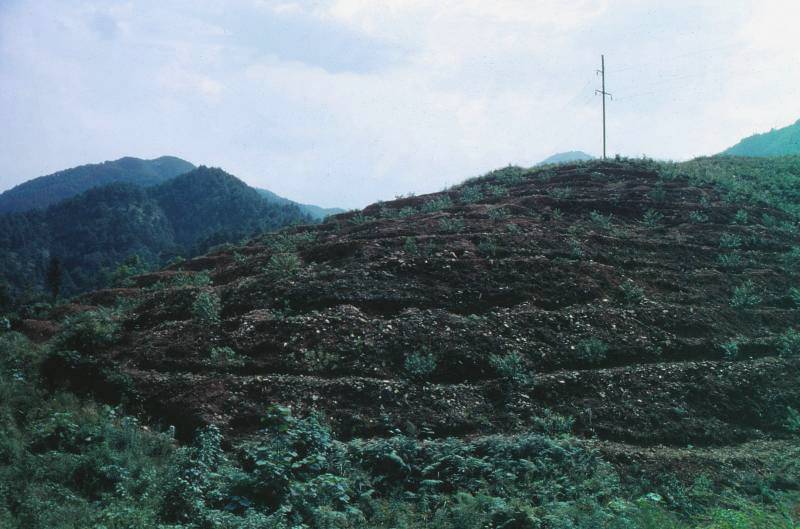
Yangmeiting waste mountain, apparently systematically being mined for ceramics
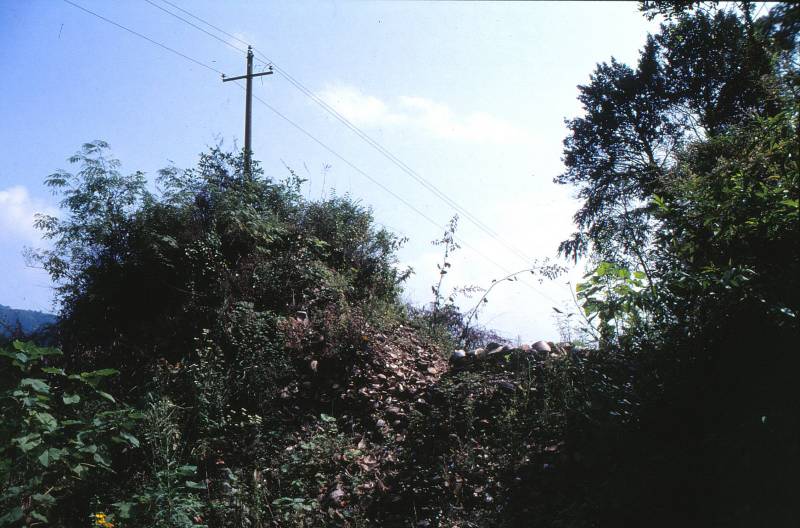
Yangmeiting waste heap excavated to its bare bones, all dug away to leave only what was absolutely necessary to support the local electricity line. On the mound ridge a row of pot saggars is lined up. I should of course have climbed up there to take a closer look but didn't. On the whole everything here is overwhelming.
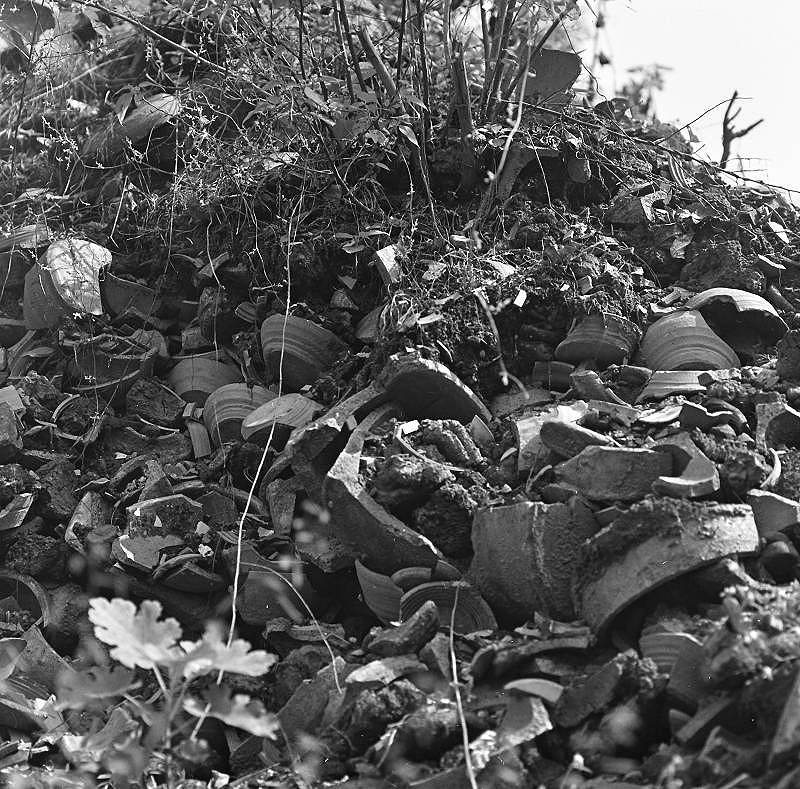
The stepped setters appeared to have been individually made to individual objects, perhaps using a measuring stick. There was a porcelain looking body shards with light blue shifting clear glaze, and bits and pieces of something that could have been covers or perhaps some sort of bowls, with the most marvelous looking qingbai glaze. From the shards we found it was however impossible to figure out how the complete objects might have looked like.

Figure 30. Bowl Base with high foot from Yangmeiting, about 1 km south of Hutian.
Along the entire road until its end I counted thirty pavilions for porcelain stone crushing along the river in the valley. The water was both supplying the fields with irrigation and at the same time powering rock hammers as soon as the water height allowed.
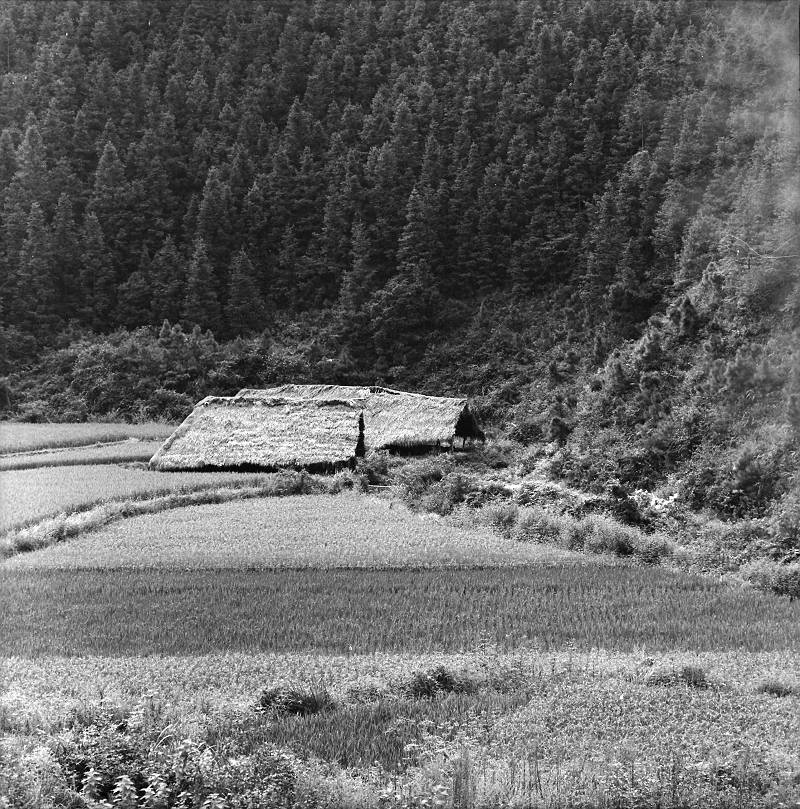
About thirty pavilions for porcelain stone crushing along the river in the Sanbao Peng valley.
After leaving Yangmeiting and Hutian behind we followed Nan He's almost insignificantly small tributary upstream, almost directly south. We continued south, past what must have been the Sanbao Peng village, but I am not sure. Road signs and tourist information left on the whole much to be desired. We might well have been the first westerners here since Brankstone in 1937, if even he bothered to go this far along this small road that must have been almost non existent at his time.
The nature was beautiful as some kind of tropical alpine landscape and as a Ming inspired Alpine resort in Schweitzer style was at Sanbao Peng a new antique looking ceramic center with wood burning kiln, ceramic pavilions and a stone pounder in the making. All handmade to the last detail. Once the shavings are gone, this facility will seem several hundred years old. It may in the future be good to remember that the year of construction of this thing was 1992.
In this direction and along this road we should hit upon the Ma'an mountain or the Saddle Hill. Here traditional wisdom said that the brown clay used for all kiln furniture was found. Considering the quantities that should have been involved I'd expected any quarries to be pretty easy to see, but I would not say there were anything obvious to be noticed. I think any such 'mud pits' would have been back at Yangmeiting.
We continued along the narrow road. It got worse and worse. The car's shock absorbers had long ago given in and it now seemed like the springs would be next.
Suddenly on the roadside just south of Sanbao Peng was a different kind of pavilion from what we had seen before. In it stood a woman with a bunch of dogs and children milling around her while she without showing any particular effort was whacking clay into bricks in a simple wooden frame.
The bricks were made out of the semi-dry porcelain clay that was made in a large facility nearby.

Using a simple wood frame she sprinkled in a little dry clay powder and with full force threw the clay into the mold and then cut the excess clay away with a bow with a string.
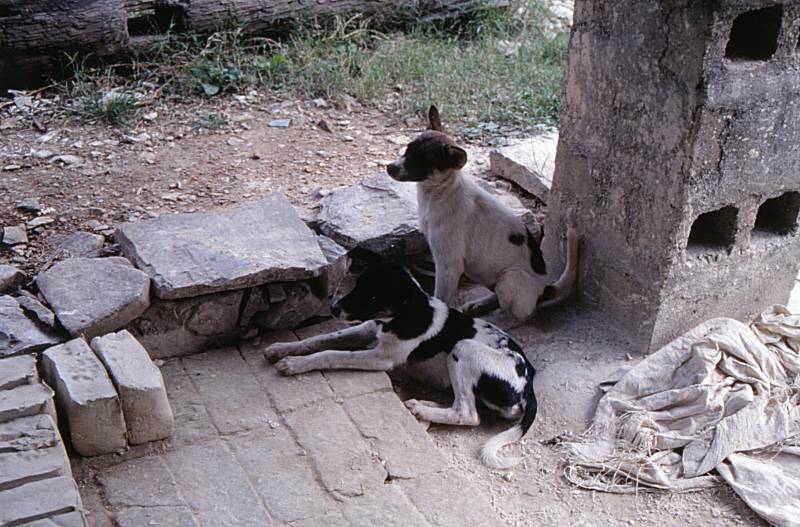
Sanbao Ceramics Center pet dogs by and large ignored us
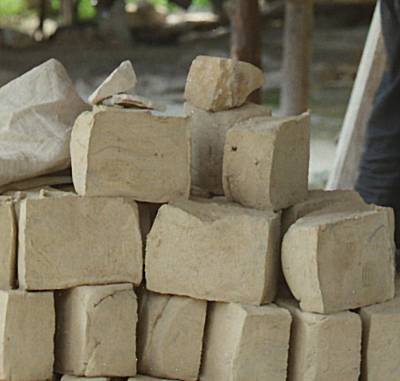
She used a simple wood frame that she easily could put together and take apart. To shape the clay bricks, she sprinkled some dry clay powder into the frame and then with full force threw the clay into the mold, and cut away the excess with a bow string.
It looked easy enough. Each brick only took a minute or two to make, but what a heavy work. When we passed this shed again a few hours later on our way home, she was still there, shaping clay bricks.
The valley became even more narrow. The small river became a stream and finally amounting to not more than a few moist leaves in a ditch.
Then suddenly we had reached the end of the road. The road ended in a courtyard in front of an office-like building. The driver ensured us that this was the Sanbao Peng China Stone Mine.
Our driver explained our interest to some of the workers on the yard in front of the mine; all nodded and asked us to come along. We went through some gates and proceeded along a narrow road. From the map this looked like a place called Shuangkeng.
The dirt road went into a ravine. Then we came to a place where white boulders of various sizes had been dumped. It was explained to us that this was porcelain stone and that it was brought up from an 80 meter deep mine. The mine shaft was only an opening and the machinery was limited to a winch and two carts.
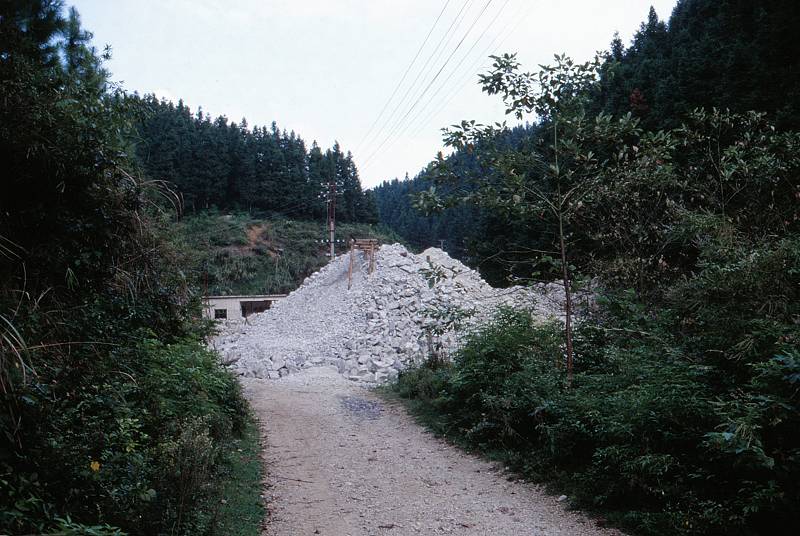
Two of the men who worked here cheerfully demonstrated how the carts after having been pulled out of the mine with the winch, was pushed by hand out onto the area and emptied.
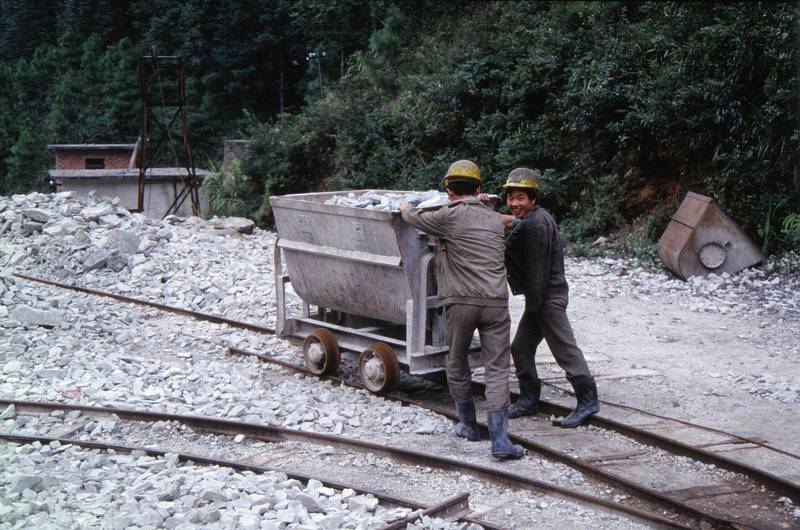
We were astonished at how friendly and helpful these guys were. It was difficult to think that this same situation could happen at a Swedish mine.
I had no reason to believe other than that the mine shaft was the 80 meters they said, but out of curiosity I still started to climb down the steep mine shaft. There were primitive steps in cement and a crooked iron railing. The Chinese miners who closely followed my ongoing activities from above the iron gates, I now saw in silhouette against the bright sky. Eventually they shouted to me that I would want to have a hard hat if I was going down there. At least I think so. I looked down the mine shaft and since I could not even guess where this thing might end, I returned with little remorse up to the daylight above.
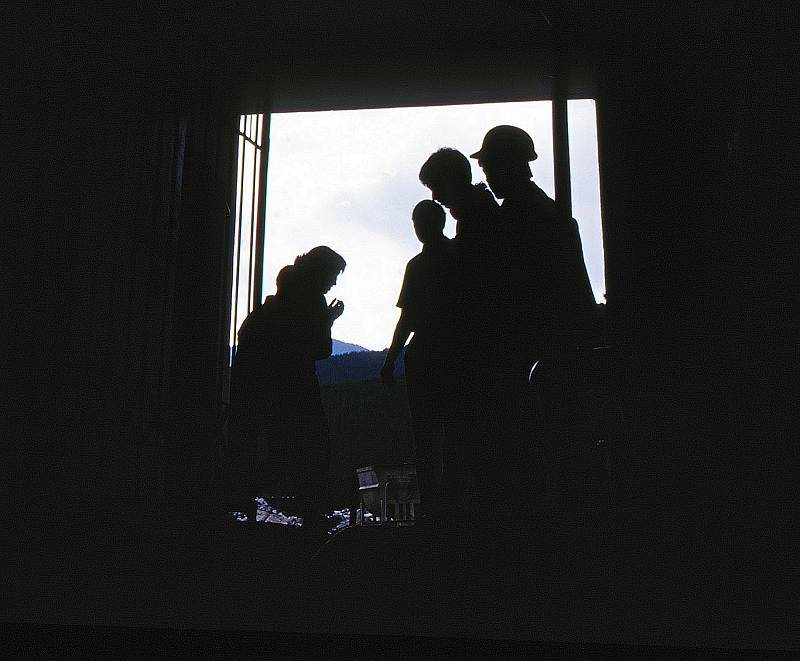
Descending into the China stone mine shaft
I asked for rock samples and the old man who showed us up to the mine explained that there were three types of stones, white and green that was good, and black that was thrown away.
After making sure that this was really the end of the road in this direction, we boarded our trusty van and started the return trip back to Jingdezhen.